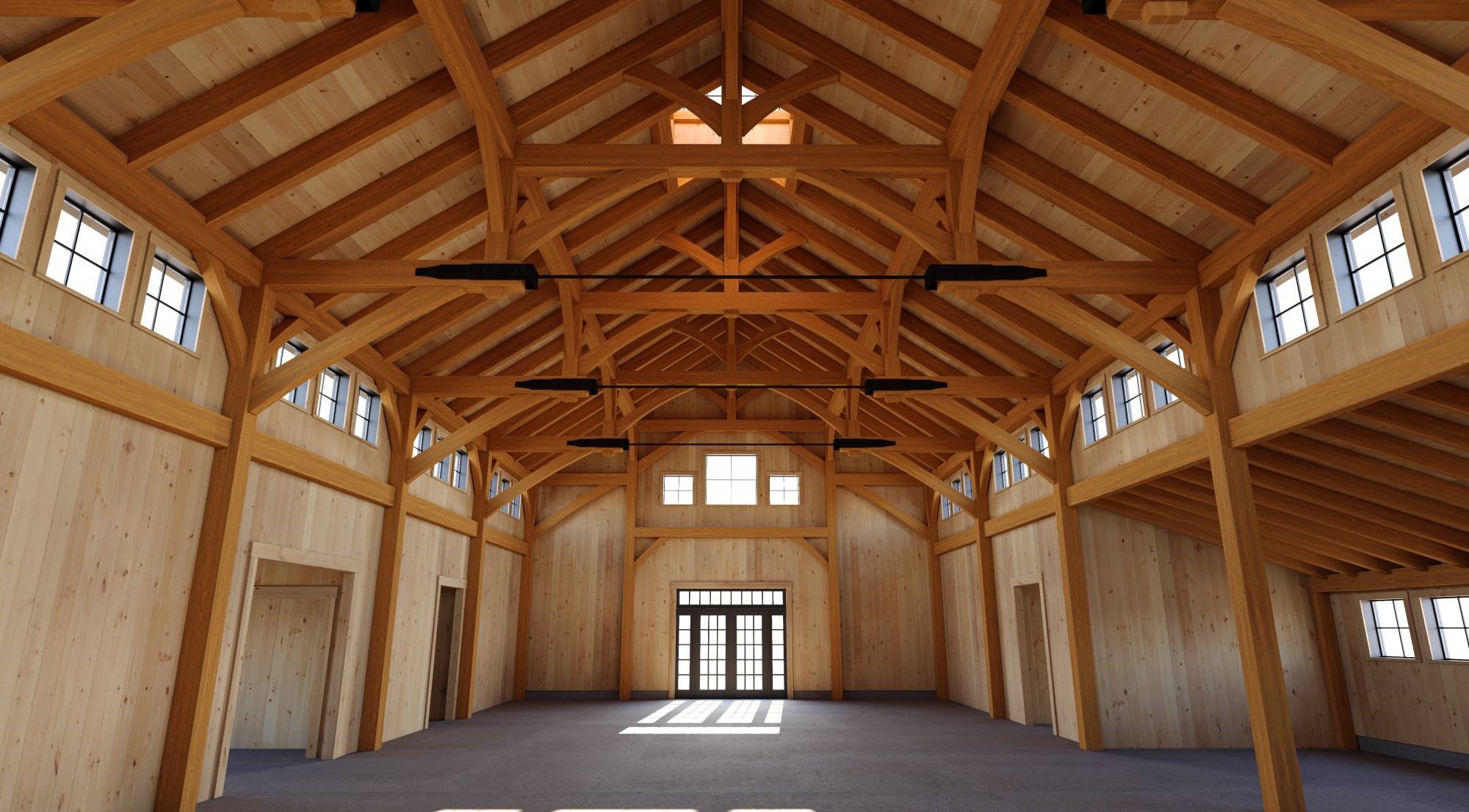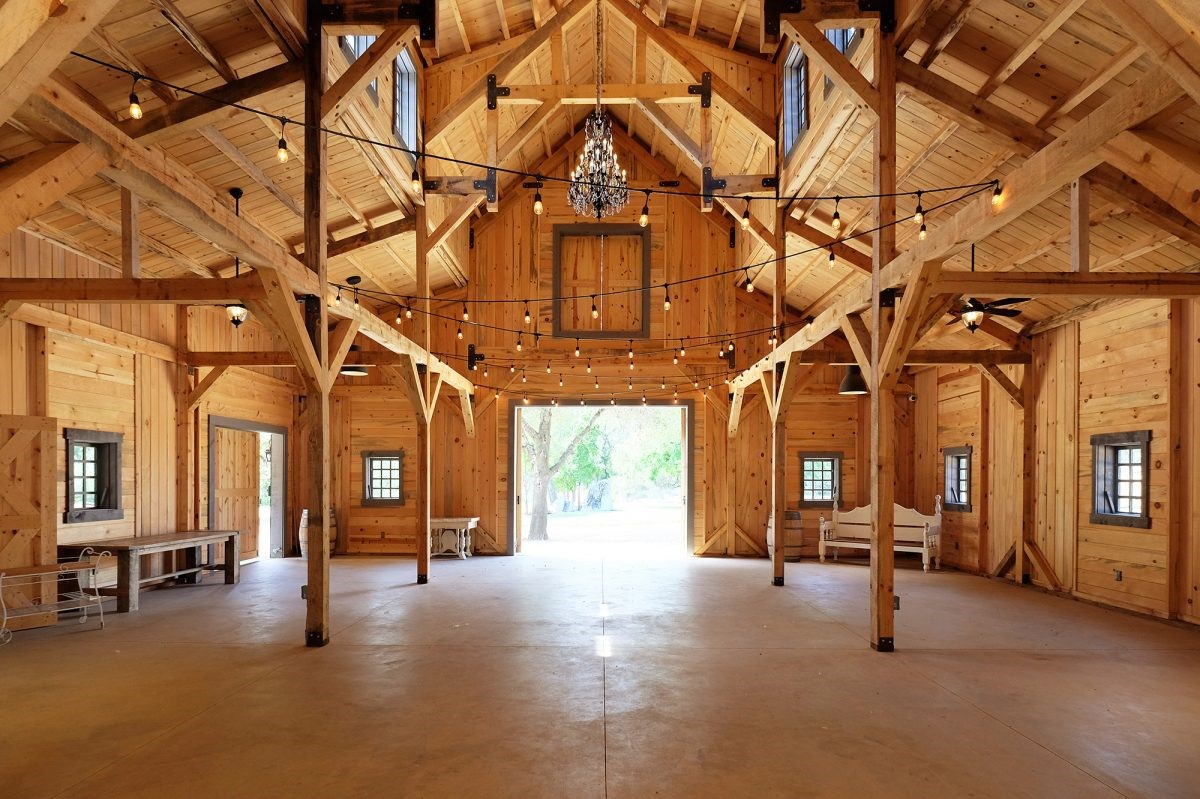
Post frame construction has become a popular option for residential barn style homes due to their cost and time efficiency. But lower costs and quicker construction aren’t the only benefits that post frame homes offer. And this construction method isn’t perfect (there are some drawbacks).
To fully understand the benefits and drawbacks, you need to understand what a post frame home is and the planning process.

Post frame homes have highly engineered wood frames and a variety of exterior options. It’s a construction technique adapted from the timber-framing technique.
The concept is simple. Instead of using steel framing or traditional studs, posts (or poles) are buried into the ground. Building on a foundation provides vertical structural support, while the girts provide horizontal structural support.
Posts are typically buried 4-6 feet into the ground to provide support, and this eliminates the need for a crawlspace or basement.
In a post frame home, the roof trusses are secured directly to the posts, so there’s no need for load-bearing walls. This is what gives post frame homes their characteristic open feel. Without load-bearing walls, you’re free to make your home’s layout however you want. The design and nature of a post frame home can provide clear spans of up to 100 feet.
Post frame homes can be built on a variety of foundations:
Some post frame builders have their own foundation options.
The beauty of a post frame home is that you have virtually unlimited options for the exterior. While metal is a popular choice, you’re free to use a wide range of materials to cover your post frame home. In many cases, you can’t tell the difference between a post frame and traditional stick-built home.
Planning a post frame home isn’t unlike planning any other new home construction. The costs are generally lower, and the construction is quicker, but you’ll have to go through the same steps no matter what type of construction you choose.
The first step is the most exciting – the design stage. Here’s where you’ll decide on a size and floor plan for your home. Maybe you have a custom design that you want to bring to life, or maybe you’re going to go with a model from your builder.
Here are a few tips:
Remember that post frame homes can be made to look like any other home on the block, so choose your options wisely.
Financing is going to require some additional work, but it is possible to get financing through a Freddie Mac and Fannie Mae mortgage. Two important criteria need to be met to ensure that your financing goes through:
You may have issues when it comes to appraising the home due to the post frame design, but an experienced appraiser will be able to correctly determine the value of the building.
Before your home can be constructed, your site will need to be prepped. The amount of work that needs to be done will depend on a variety of factors, including:
The site work can take a month or more, and these are costs that are generally not included with the price of the home.
Once the site work is complete, construction can commence. Post frame homes can be constructed in as little as two weeks.
Post frame homes have a lot of benefits over their stick-frame counterparts. These buildings include:
There are post frame building benefits, but there are also a few drawbacks that need to be considered.
Post frame builds are becoming more popular, and the post frame house does have its advantages. But a few of the main concerns over a stick-built home also need to be addressed:
A lot of these issues are minor and can be worked out in just a few days. The benefits of a cheaper, more open build definitely outweigh the disadvantages of a post frame house

Post frame homes are a great opportunity to save on the cost of a home or opt to have a home that has more open spaces. These homes are faster and cheaper to build, and in terms of energy efficiency, they outperform their stick-built counterparts.